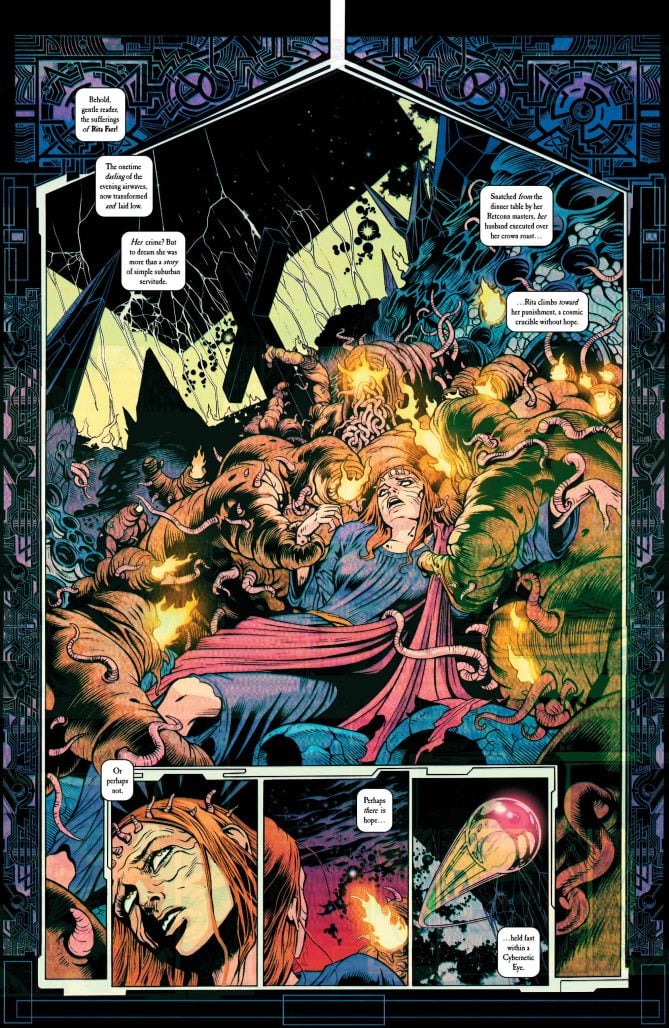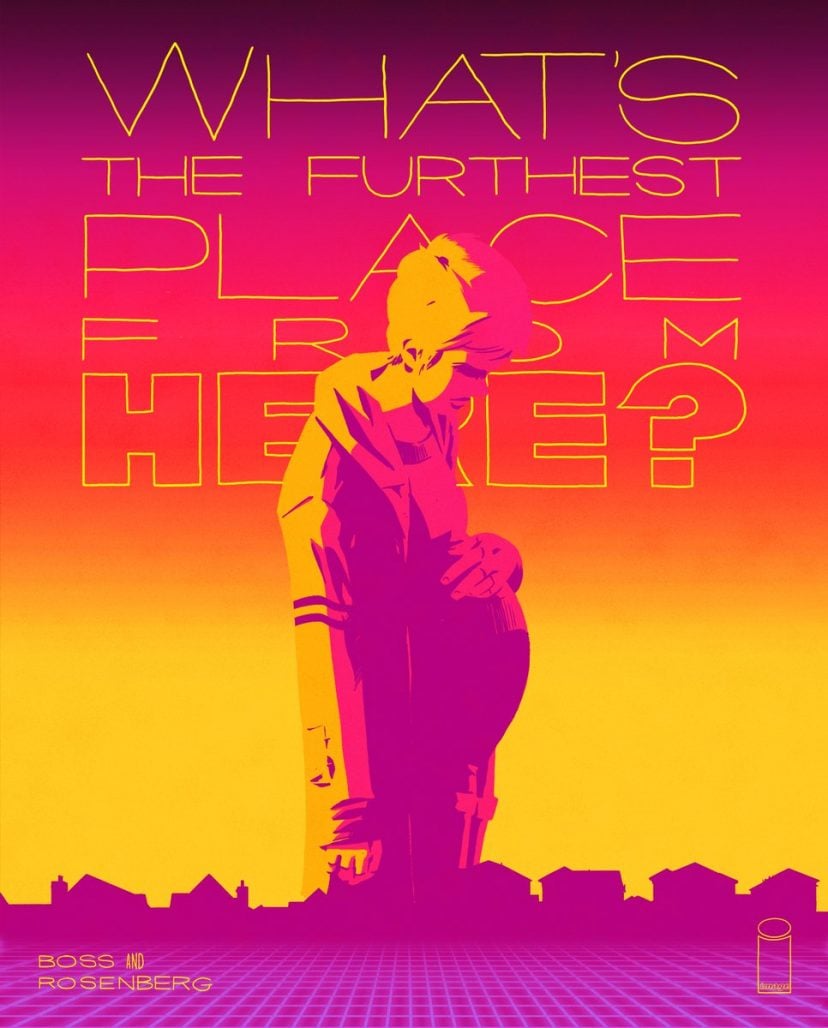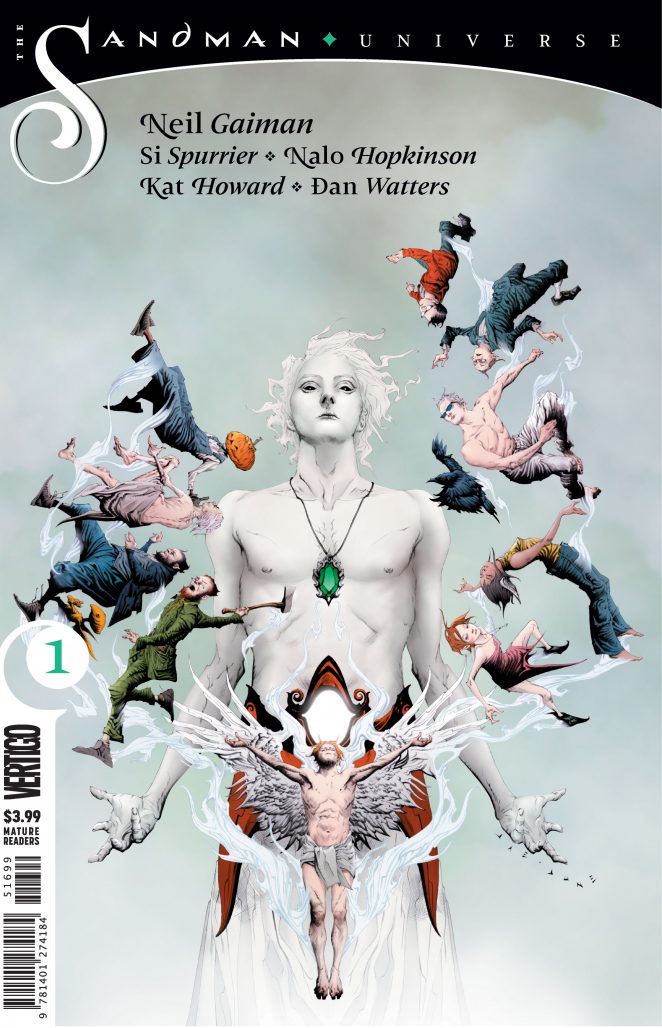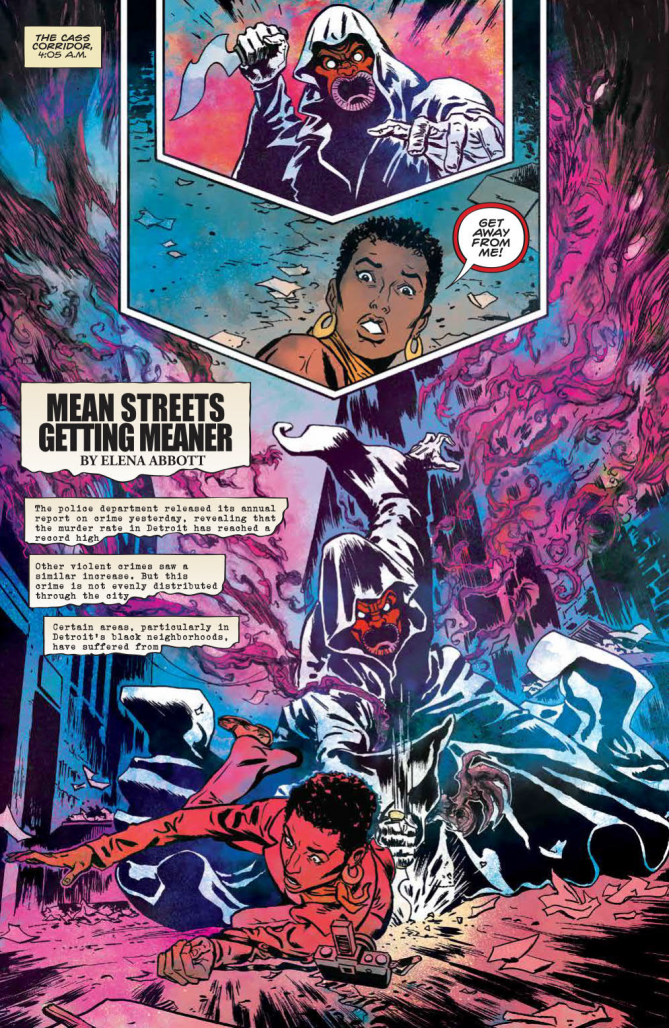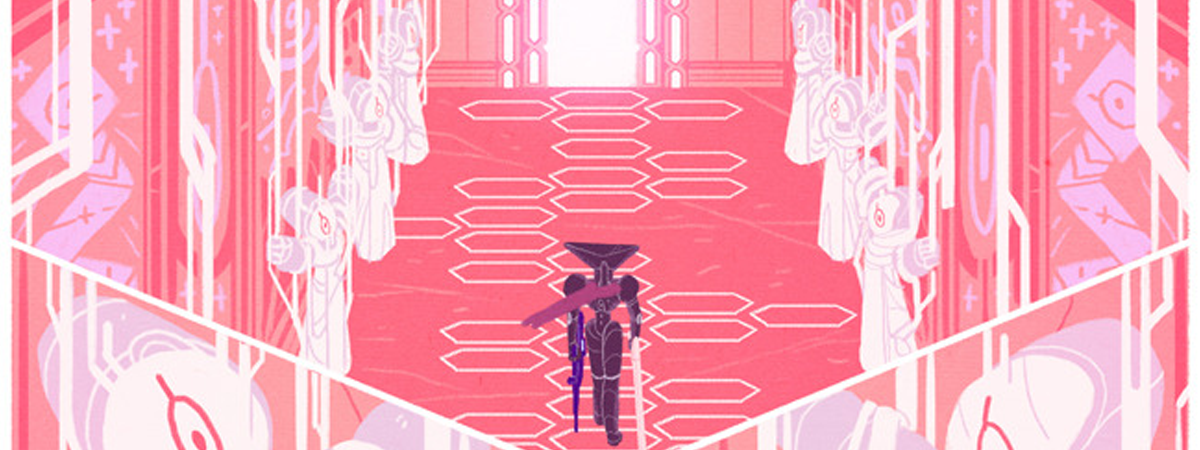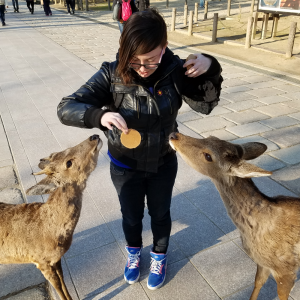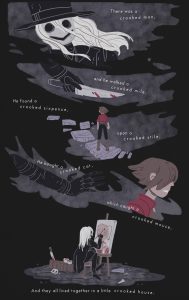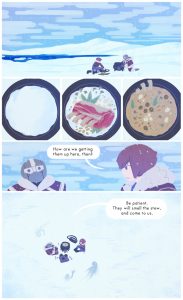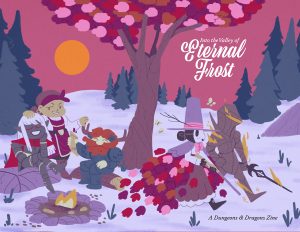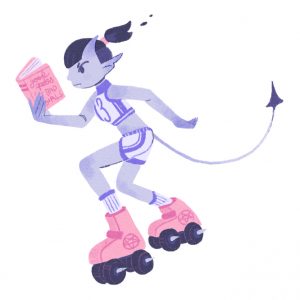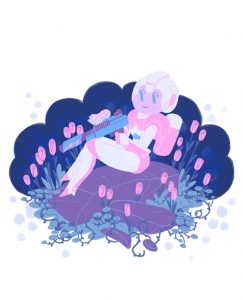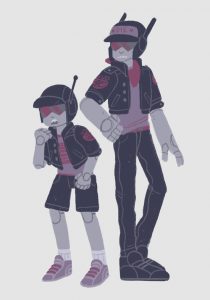Each week, Alex Lu is highlighting the work of some of the coolest illustrators of our generation. Know anyone who should be featured (including yourself)? Email [email protected].
This Week: This week, we speak to Natasha Petrovic, who, along with her partner Ali Leriger, is creating one of the coolest webcomics I’ve seen in a long time. In Ophiuchus, on which Natasha serves as primary artist, she blends bright pastel and neon colors with mythology and dark questions about the nature of free will to create a horror-filled hero’s journey unlike any you’ve ever seen before.
 Artist Spotlight: Natasha Petrovic
Artist Spotlight: Natasha Petrovic
Lu: Growing up, what were the comics that inspired you to want to make comics?
Natasha Petrovic: Alright, come into the time machine with me. The year is 2008. I’m on DeviantArt, and I’m scoping the front page. Someone just posted an animation to the finale to something called Endzone. I don’t know what that is, but I watch it and I love it. I have to work backwards from there, to figure out what’s happening. It’s a complete mess of comics, characters, and action. And that is the exact point at which I fell in love with comics, and was sucked into the wormhole of Original Character Tournaments.
If you don’t know what OCTs are here’s a simplified explanation. In OCTs there are one on one comic battles. Two artist draw out their characters fighting, two different ways the story could go. Those comics are then judged and whichever is deemed better, becomes the true canon for the tournament. Then you move onto the next opponent until you lose and are knocked out, or win the whole dang thing. This is some seriously nerdy stuff.
As a kid though, it was thrilling! It was a collaborative, living narrative that was shaped through group efforts and ideas. This niche community is what got me passionate about comics. I loved crafting stories with other people, and getting invested in theirs, and at the time, it was a great place to nurture the budding comic skills I had.
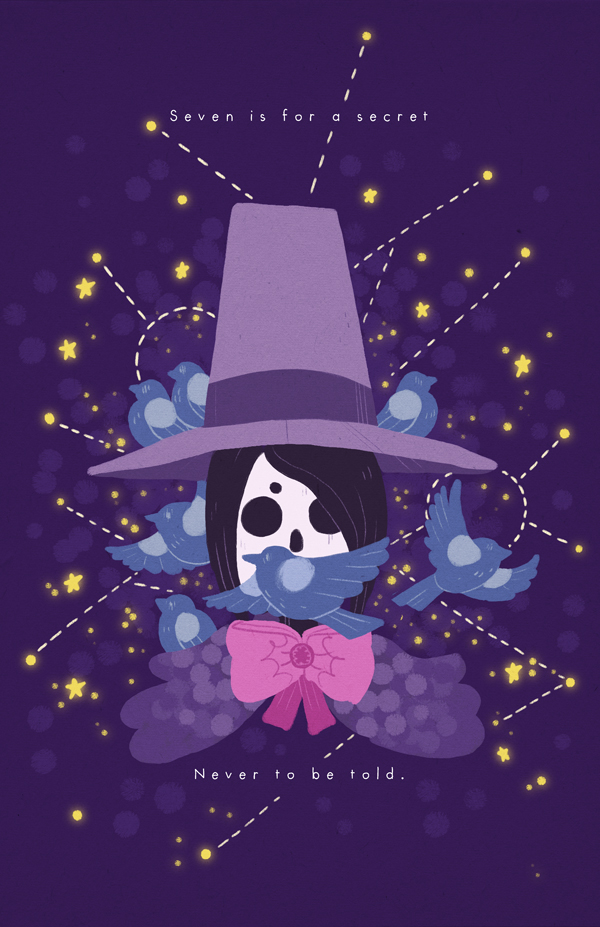
Lu: Woah! This is wild. I was a big user of DeviantArt at the time as well but I totally missed out on this subculture. OCTs sound like a lot of fun—can you tell me about the favorite one you worked on? Or a fun memory you made while working on one with someone?
Petrovic: Yeah, sure. The first one I ever did was called “The Cure.” After the “audition” period, but before the actual rounds had started I remember going through all the competitors’ character sheets and intros and devising plans for what would go down if we were matched up. I remember staying up really, really late writing notes and making battle plans. For whatever reason I look on that really fondly, my devious little child brain at work. I guess I’m impressed with how into the event I was.
Lu: In Ophiuchus, your other works, and your digital handles, your love of horror comes through. What is it about the genre that inspires you and are there any works in particular that you draw a lot of inspiration from?
Petrovic: Horror is like a playground for the imagination. That kind of sounds corny, but it’s true. It’s a genre where monsters and the supernatural can go wild. The real world is already a scary place, so when I look to horror more often than not, I’m hoping for a fantastical element. It kind of takes the edge off, I guess.
I look to horror movies a lot for inspiration. The Nightmare on Elm Street franchise alone is like a hotbed for awe-inspiring special effects. John Carpenter’s Halloween is also extremely good. I love the early part of that film, where Micheal Myers is just an encroaching shape on the threshold of all these suburban streets and homes. It’s so unsettling. The feeling that you get from that kind of tense atmosphere is worth chasing.
As for other important works that inspire me, here’s the least surprising answer I could probably give: Dracula (1931). I come back to this film all the time. It’s got a really great sense of composition, the balance of black and white is great. The sets are fantastic. Also have you ever paid attention to Béla’s hands in that film? They’re a whole level of inspiring unto themselves. Alright, now I’m starting to geek out a little bit, haha, sorry.
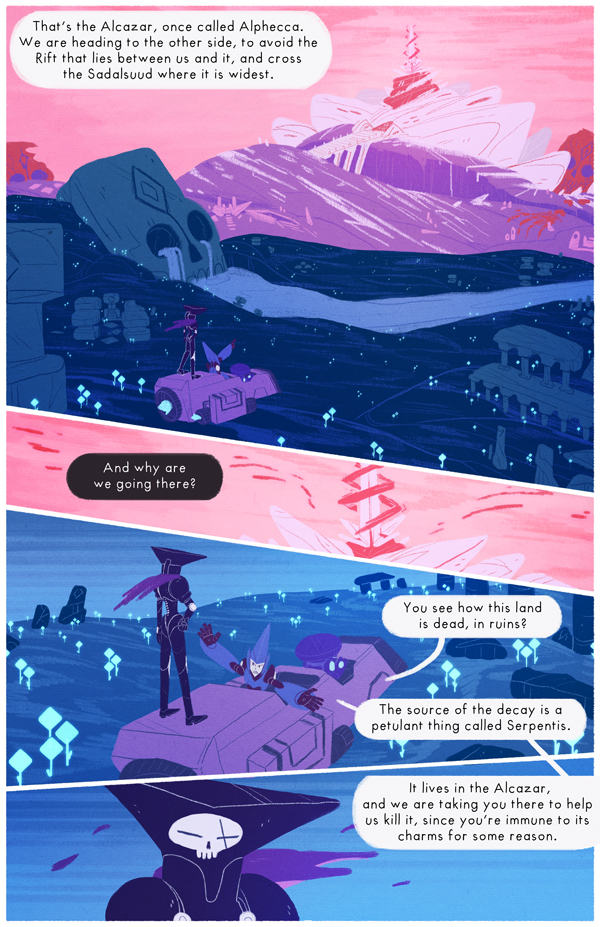
Lu: Never, ever, ever apologize for geeking out. I’m not gonna lie to you though—historically, and especially as a kid, I’ve generally stayed away from horror stories. I’ve started to dabble with genre more recently, but it’s funny that you say that you felt like horror took the edge off the scarier parts of the world—I always felt like they added even more edges to them. Like I remember watching Snow White as a toddler, which obviously is not even a horror movie, and then having a recurring nightmare about being in the Queen’s position as lighting strikes that cliff and I fall to my dark and dramatic death. Did you never have those freaky dreams after watching horror films?
Petrovic: Oh man. I’m sorry your baby brain betrayed you like that. That’s kind of a rad dream, but definitely scary for a kid. I hope you’re alright with heights.
And, I don’t know. Most of my worst dreams don’t feel derivative of the media I intake. It feels more like a manifestation of my biggest real world anxieties. In my nightmares the motif that reoccurs most often is me grappling with forces that are invisible. And mostly I mean that literally, as in monsters that I just can’t see. But when I wake up I think back on this terrible dream, like, “Wow, my brain just conquered up a big metaphor about debt or an illness or something for me, huh.”
Recontextualizing everyday fears into a movie with like, a plot, and a clear arc makes them seem more tangible to me, personally. Like, yeah, there’s evil out there, but if you’re good or smart enough you can manage to get away with your life, or even defeat it.
Lu: In your bio, you talk about wanting to bring color and cuteness into horror. A lot of people might say those things are polar opposites and that making things too bring and adorable might sap away from the tension implicit in horror stories. So when you bring those things together in a story like Ophiuchus, is your goal to make a story that is terrifying yet poppy, or to create a subgenre all your own?
Petrovic: I think if executed properly anything can be scary. I’ve always been very fascinated with the idea of a story being really cute on the surface level, but it all being built on a foundation of darkness. I’ve tried some of that with Ophiuchus. While it’s more of a visually striking sci-fi/fantasy story, I’ve tried to include elements of horror in a lot of the background details.
I don’t know if I wanna lay claim to a whole subgenre quite yet though! It’s more a personal crusade to make cute art. Because if a work is bright or cartoony, it doesn’t mean it will lack emotional depth or meaning.
A lot of the time it seems like for something to be considered “horror” it has to be gritty, realistic, or overly gorey. I think what’s more important is strong concepts. Like, look at Emily Carroll’s work in her book “Through the Woods”, it doesn’t lack any color or style, and she works within the language of cartooning. But I don’t think anyone would question that she’s a master of the horror genre. It’s all about how you tell a story.
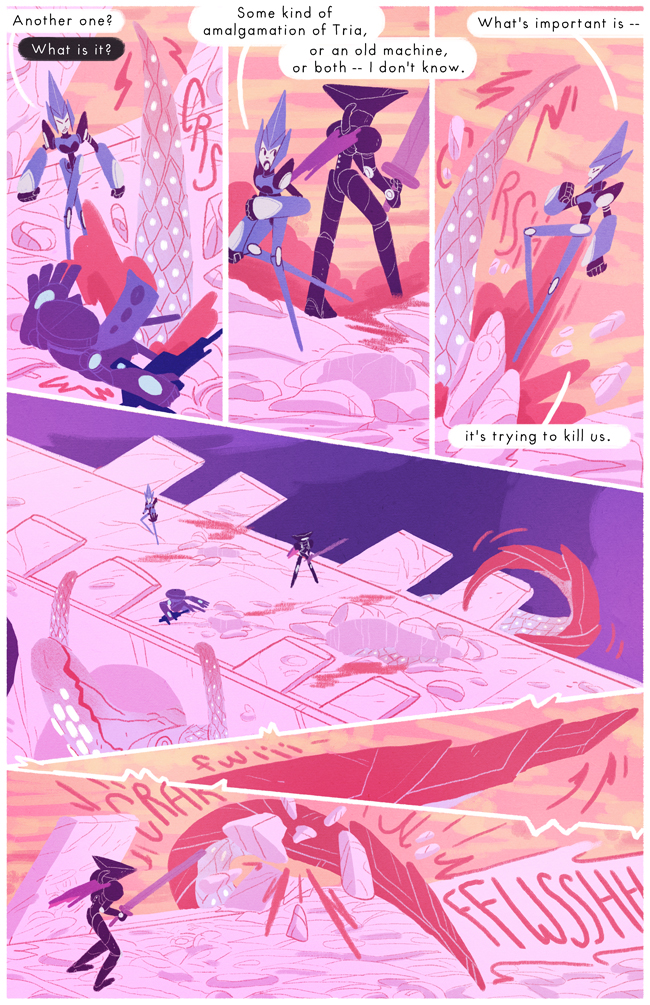
Lu: I absolutely agree with that. One of the most unsettling things I’ve watched recently is the “Nosedive” episode of Black Mirror. And superficially, that world is very bright and perfect, full of pastel pinks and polish. But it’s polished to the point where it becomes surreal and unsettling. So yeah, definitely, the genre is much more open than its standard tentpoles would indicate.
I suppose, jumping off of that, can you talk about some of the concepts at play in Ophiuchus? The title comes from the astrological symbol, right?
Petrovic: Haven’t watched any Black Mirror, but that sounds cool. Definitely seems in line with what I’m talking about.
That’s right! Ophiuchus is a constellation. It means “serpent-bearer.” We developed a good chunk of the story around ancient myths, with a lot of focus on stars. All the characters are named accordingly. Sagitta, from the constellation of Sagittarius, means “arrow.” Pyx is short for “Pyxis” meaning
“compass.” Cerberus and Hades are characters. And so on.
Ophiuchus is a hero’s journey. It felt right to draw from the well of classic mythology for such a tried and true story archetype.
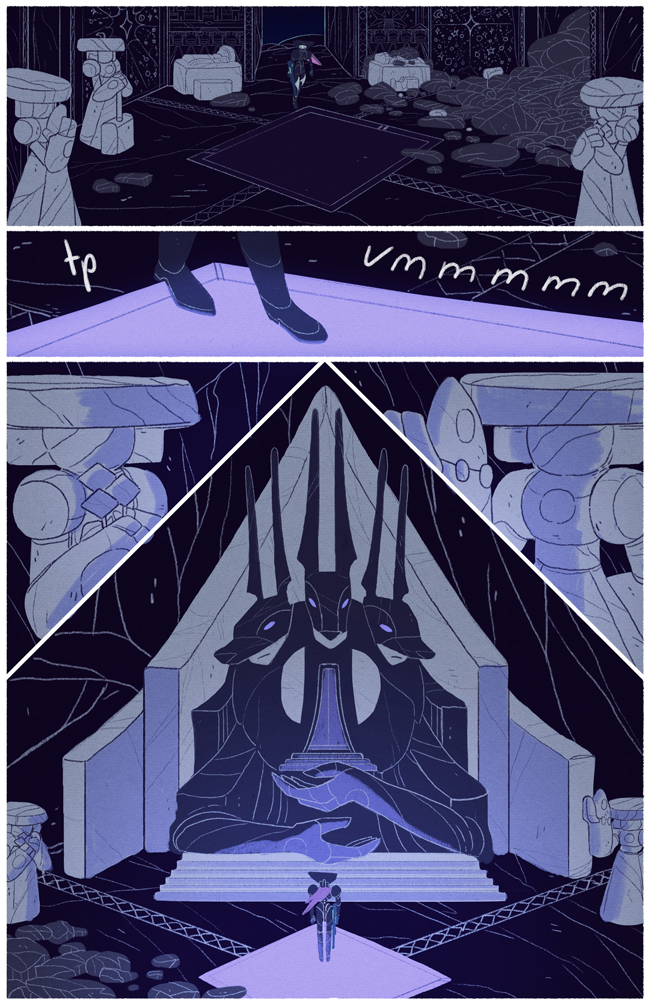
Lu: Your artistic style reminds me a bit of something like Steven Universe‘s and a lot of something like Samurai Jack‘s in its use of perspective and heavily geometric character/world design. What advantages do you think a style like this one affords over a more traditionally representational style? Or put another way, what attracted you to this artistic style for Ophiuchus?
Petrovic: In my case, a lot of the style was actually developed out of necessity. All throughout high school and college I found myself falling into the standard mainstream American comic making procedure. You know, do thumbnails, move onto pencils, refine those, ink them, do flat colors, add shading and effects. Pencilling and inking stuff is great, but for me it was extremely time consuming. Getting even a single page done was a huge undertaking because I would get wrapped up in making every little thing look as perfect as I could manage.
I kind of gave up on keeping to that style of comic production once I was out of school for a bit. It was making it too much of a drag to make comics.
So that’s one advantage the more representational style has for me anyway, it’s not a labor to produce, it’s a joy. I don’t have to fuss over getting every arm or leg or angle exactly correct. I can produce pages A LOT faster. Plus the freedom to exaggerate shape and form is an invaluable tool in storytelling. I feel like it helps me make certain moments more impactful.
I really feel like my artistic ability has grown a lot in response to doing Ophiuchus. It started off as a way to save time, but the style ended up being one I felt way more at home in.
Lu: You know, something that stood out to me about your style in Ophiuchus in particular—and I think it comes across very strongly when you view the archive for the comic and see all the pages laid out before you—is the way that different characters have distinct color palettes that seem to influence the world around them in scenes that focus on them. Can you talk about how you develop these color palettes a bit?
Petrovic: Yesss, this is the good stuff! The colors I picked in Ophiuchus are full of intention. The palette was developed to help further the narrative and strengthen the overall themes. The story starts at a set point and the journey the characters go on is a fairly straight line with one goal – to get to the epicenter of this virus infecting the universe.
We’ve flipped the ordinary color dichotomy. Ophiuchus, the heroine, is a shadowy knight figure, while the virus is a creature of violent whites and reds. I wanted to show the heroes getting closer to their goal by having the environments gradate from dark to light. You can watch them go from the relative safety of the deep, dark blue to purple, to more pink, and then to the full on searing reds and whites. The virus has had a serious impact on this world and that’s one way I wanted to show it.
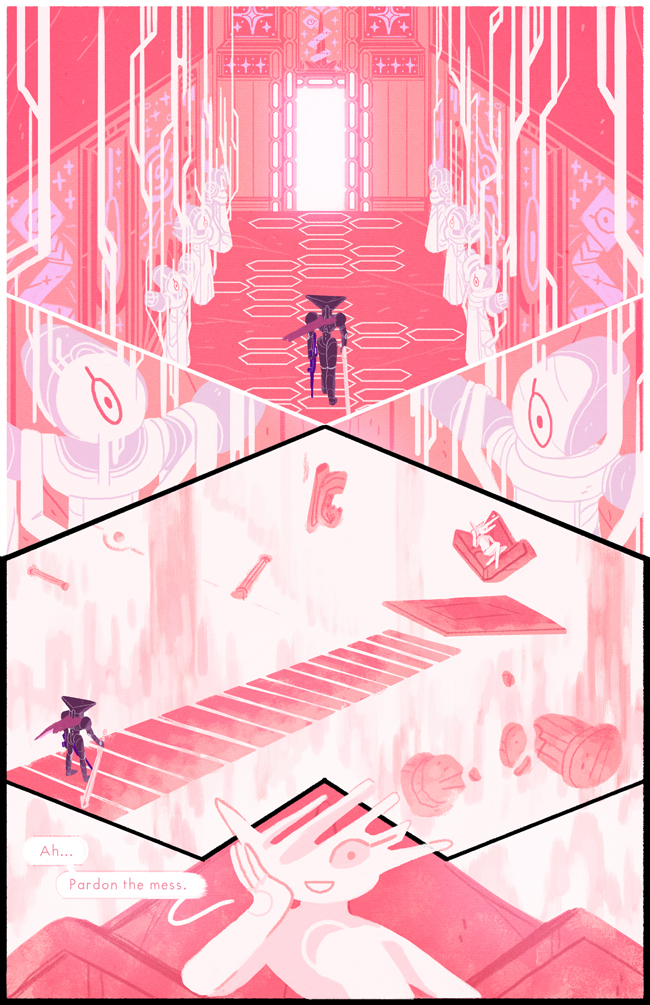
Other important color notes, pulling from Samurai Jack, which you mentioned earlier, I noticed that Jack’s white robes made him like a beacon on the screen, always visible against those colorful, painted backgrounds. I used that same principal for Ophiuchus, but inverted. One rule I made for myself was generally to have Ophiuchus be the darkest thing on the page to always have her stand out from the environment.
So that’s how the comic developed its look. I stuck to limited colors that gradually flow into one another. The decisions made were all for the narrative’s sake.
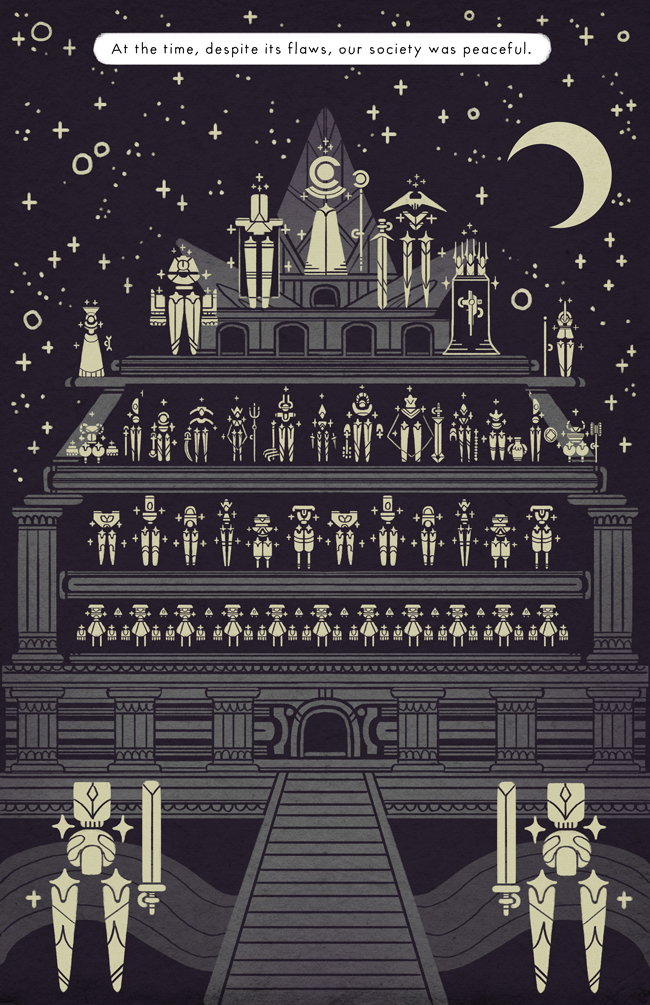
Lu: In general, what are your career goals? Whether they’re in comics or outside of the medium.
Petrovic: Oh man, career goals. Well, I want to make a bunch more comics, for one. Ali and I already have a few more projects lined up to do together after Ophiuchus wraps. I’ve also wanted to work in video games for forever. I’ve been messing with my own game ideas on the side for a long time, but I would probably work for a company if given the opportunity.
I’ve also been thinking about shirt designs? I jumped on the enamel pin making bandwagon this year, and making products you can wear is just really cool. So I might try to pursue more of that, just for the personal satisfaction of it.
Lu: And Ophiuchus is coming to an end very soon, right? Looking at the project as a whole, what do you feel like you’ve learned from making it? Artistically, promotionally, administratively, or otherwise.
Petrovic: Yeah as of right now I have roughly 10 pages left to go? And then it’s just over. Scary and exciting!
And hm, I suppose I learned I could pull off a project of this size. All my other comic works thus far have been short stories or single pages. A few weeks of work at this most. This took over a year! That’s a lot of scheduling and routine to get it done. A lot of hard work. Worth it though, I’m really happy with how the whole story is turning out.
Additional Samples:
The Weekly Art Round-Up
Howard pic.twitter.com/GmSGdlWjqi
— Jeremy Sorese (@jeremy_sorese) February 27, 2018
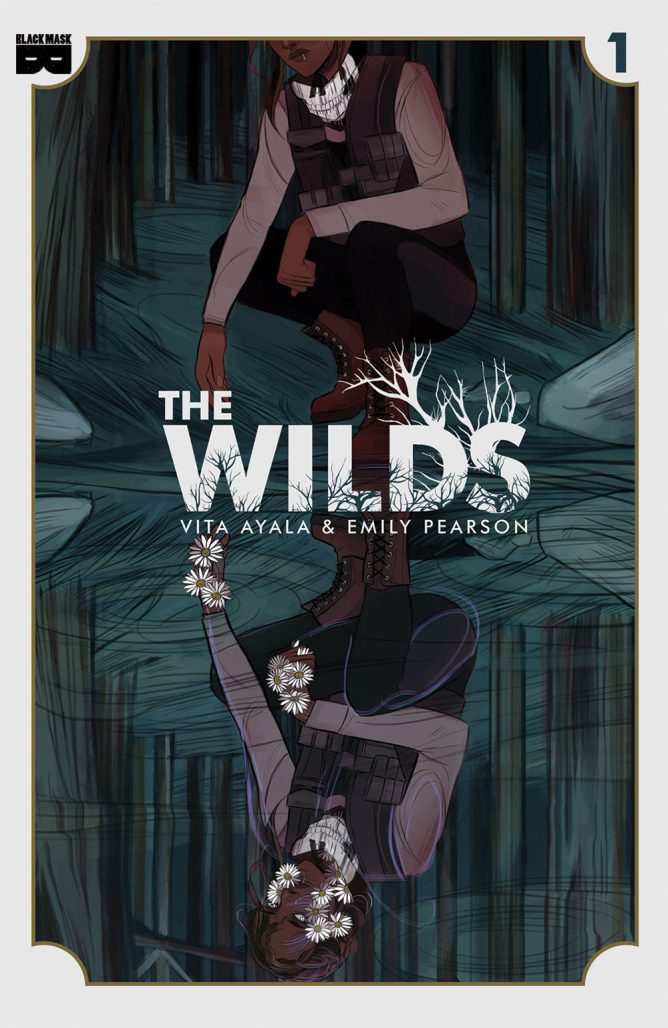
So, this was the page I was slaving away on for close to 2 days that I mentioned yesterday in my “Good Idea/Bad Idea” post. #sneakpeek #shh #donttellanyone #twittersecrets pic.twitter.com/K4XSwMbaWq
— Phillip Sevy @ECCC EE6 (@phillipsevy) February 14, 2018
